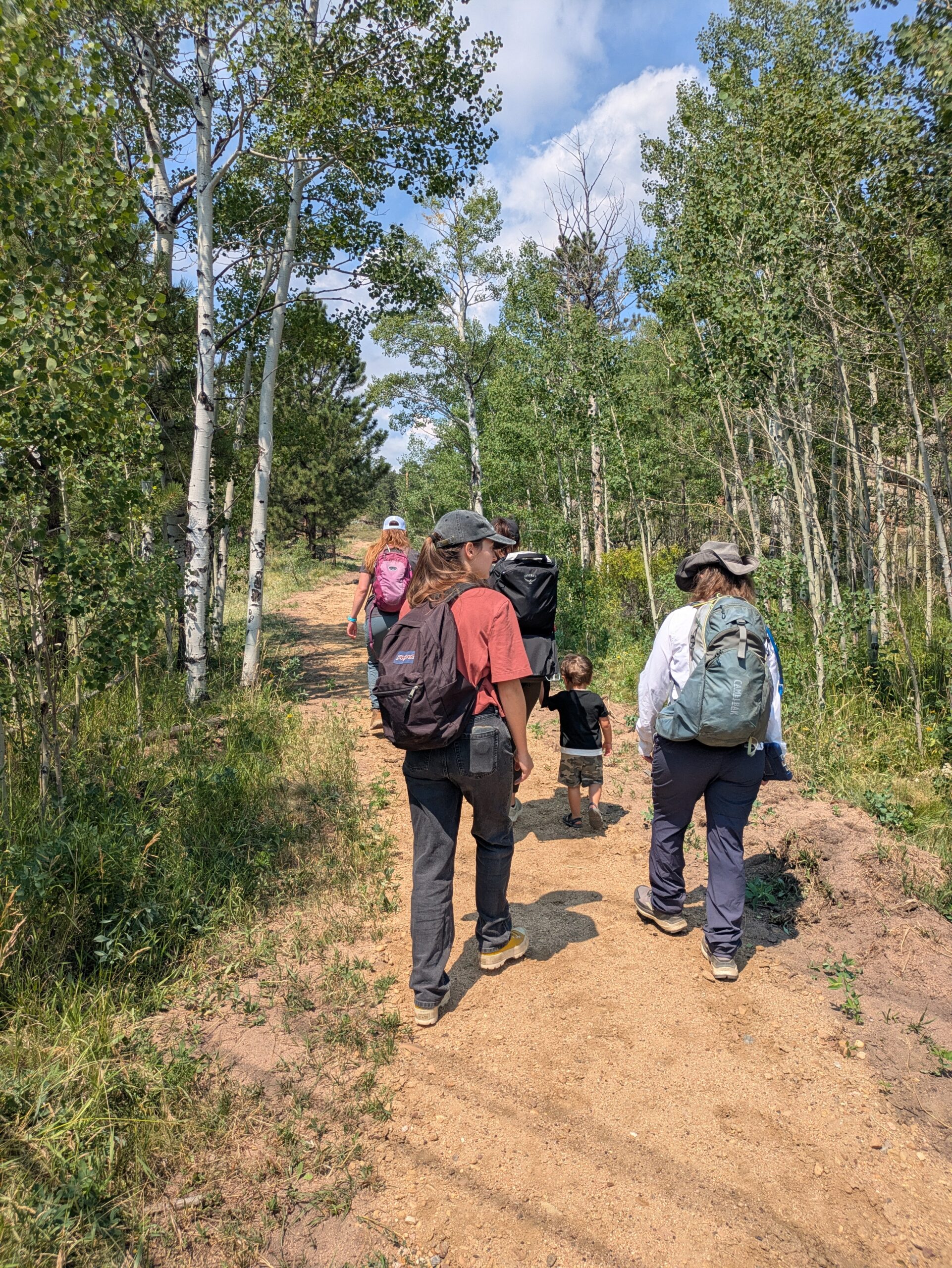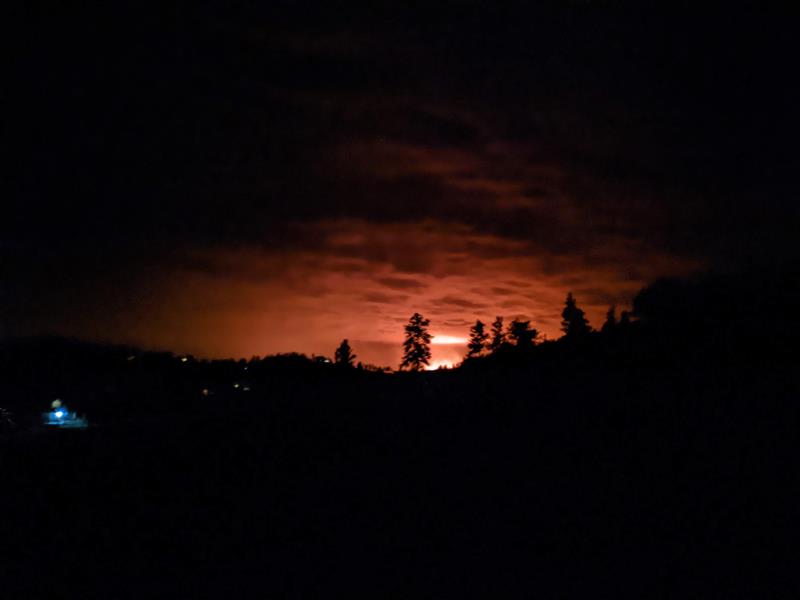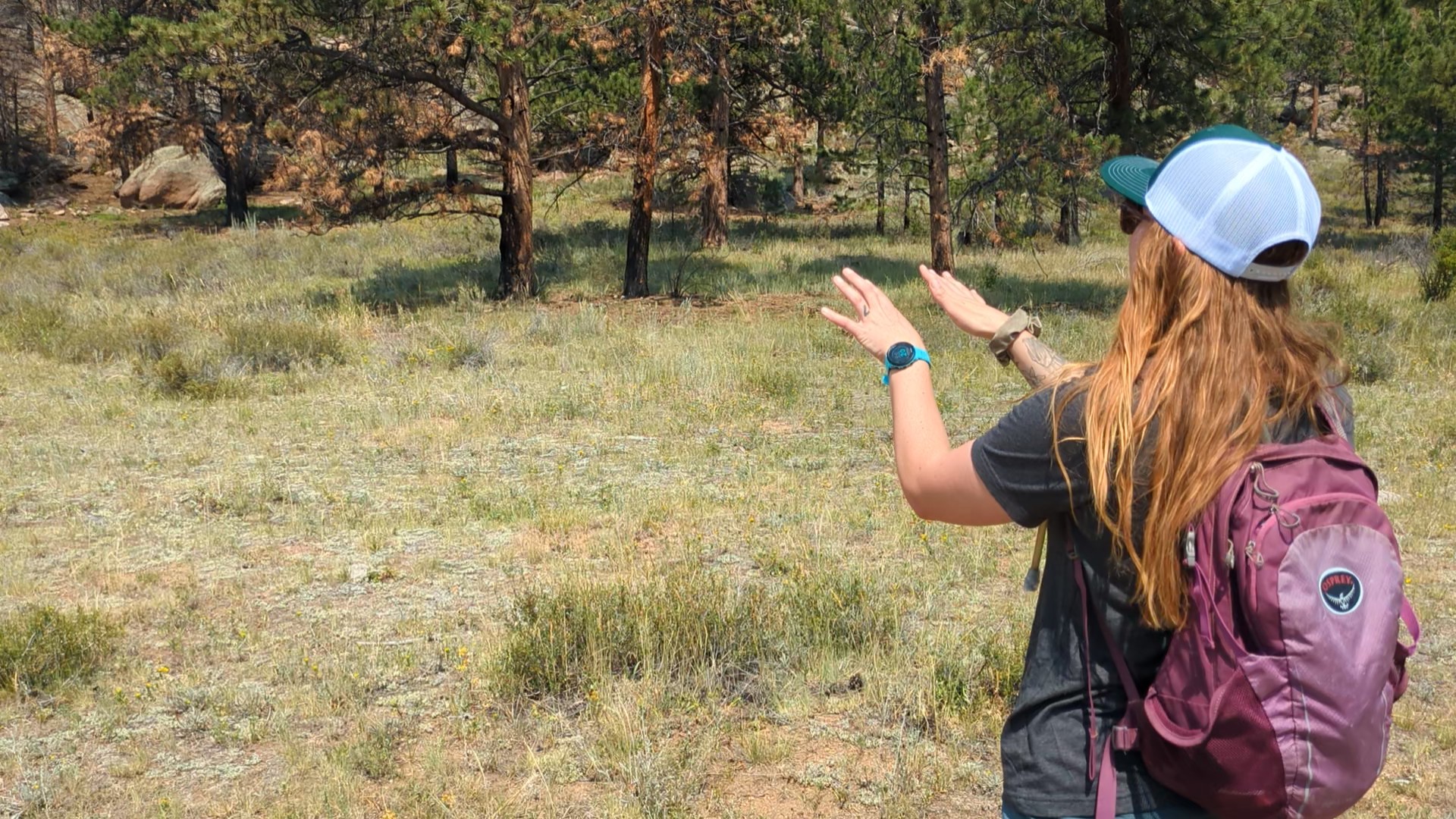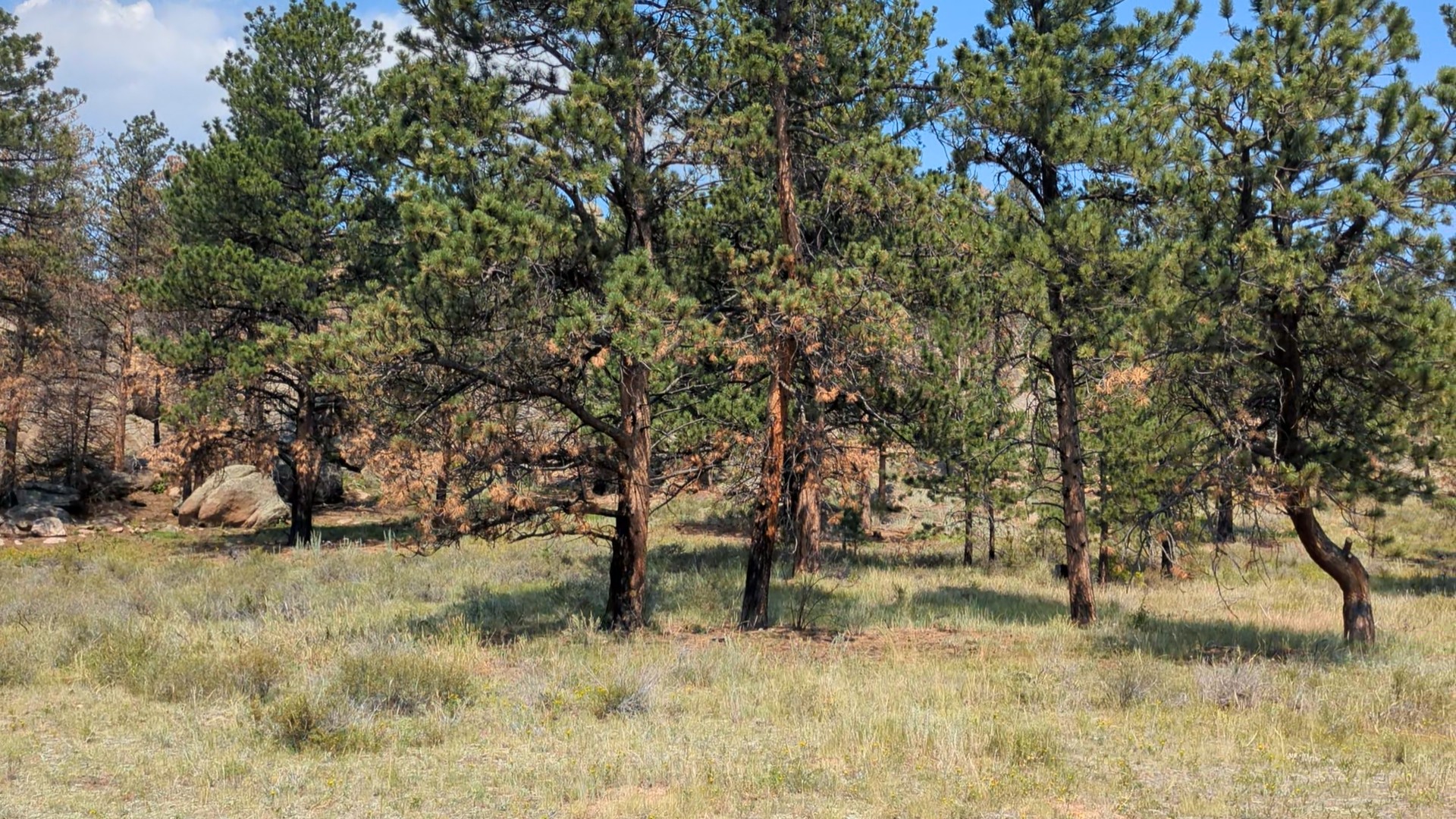Seeing Fire Differently: Red Feather Lakes Walk and Talk
 #forestproud out in the field! Fire is a part of life in northern Colorado, and for communities like Red Feather Lakes, it’s both a risk and a tool. Recently, our project manager, Alyssa Stewart-Lambert, joined residents for a “Walk and Talk” hosted by the Red Feather Lakes Community Library. Together, they explored a nearby prescribed burn project and learned what it means to live in the Wildland Urban Interface (WUI), how fire shapes the forests around them, and what stewardship looks like in this landscape.
#forestproud out in the field! Fire is a part of life in northern Colorado, and for communities like Red Feather Lakes, it’s both a risk and a tool. Recently, our project manager, Alyssa Stewart-Lambert, joined residents for a “Walk and Talk” hosted by the Red Feather Lakes Community Library. Together, they explored a nearby prescribed burn project and learned what it means to live in the Wildland Urban Interface (WUI), how fire shapes the forests around them, and what stewardship looks like in this landscape.
Prescribed fire can be complex and sometimes controversial, but when we break down the science into We Speak Forests language, the benefits are clear: healthier forests, safer communities, and a more resilient future.
Living in the Wildland Urban Interface (WUI)
Residents of the Red Feather Lakes area live in a zone known as the Wildland Urban Interface, or WUI (pronounced woo-eee). It’s where human development meets wild ecosystems, forests, grasslands, and other natural areas overlapping with homes and businesses. Living in the WUI brings beauty and connection to nature, but it also significantly increases the risk of wildfire ignition and spread. That makes prevention and mitigation efforts essential.
What Kind of Forest is Red Feather Lakes?
Red Feather Lakes sits in Colorado’s upper montane forest zone, between about 8,000 and 10,000 feet. These forests are a mix of ponderosa pine, Douglas-fir, lodgepole pine, and quaking aspen. Historically, upper montane forests experienced frequent, low-intensity fires that cleared out underbrush, kept stands more open, and created diverse habitats for wildlife.
But decades of fire suppression have changed that balance, allowing fuels to build up and stands to grow denser, making today’s wildfires burn hotter and spread faster. That’s why prescribed burning, which reintroduces fire under controlled conditions, is such a powerful tool in these forests.
Lessons from Recent Fires
The Red Feather Lakes community knows wildfire risk all too well. Two of Colorado’s largest wildfires in history have impacted the area in the past decade:

- 2012 High Park Fire – Burned 87,415 acres, destroyed more than 250 homes, claimed one life, and caused $113 million in damages.
- 2020 Cameron Peak Fire – Burned 208,913 acres across 112 days, destroyed 492 homes, and became the largest wildfire in Colorado history.
Yet even in the midst of destruction, there was a success story. On the northeastern flank of the Cameron Peak Fire, flames stopped at a “ribbon” of treated forest, an area where prescribed burning and thinning had been done on both public and private lands. Local videographer Evan Barrientos documented this striking example of proactive management in a short film (Watch it HERE)
The Magic Feather Project
From these lessons, the Magic Feather Prescribed Burn Project was born. This large-scale effort is a partnership between the Canyon Lakes Ranger District of the Arapaho and Roosevelt National Forests, the Natural Resources Conservation Service (NRCS), The Nature Conservancy (TNC), and the Coalition for the Poudre River Watershed (CPRW).
Together, they’re working to treat 6,329 acres in northern Colorado, creating another strategic “ribbon” of protection across Forest Service and non-Forest Service lands.
The project’s goals include:
- Reducing the buildup of brush and branches that fuel intense wildfires.
- Restoring ponderosa pine and mixed-conifer stands to more natural conditions
- Retaining and encouraging old-growth characteristics
- Improving wildlife habitat
Work began in 2023, and about 24% is complete. Community perspectives remain mixed, which is understandable given the scars left by two record-breaking wildfires. Prescribed burning is one of the most effective tools we have to reduce wildfire risk, but it’s also one of the hardest to talk about. (Learn more about the Magic Feather Prescribed Burn Project HERE)
Seeing Fire Differently: The Walk and Talk

The Red Feather Library hosted its Walk and Talk on the Lady Moon Trail in the Roosevelt National Forest, where portions of the Magic Feather Project are underway. Alyssa led a group of locals through a recently prescribed burn to see what the forest looked like a year later.
What they found was resilience:
- The canopy opened, letting in more sunlight
- Understory vegetation thriving
- Aspen groves regenerating with dozens of new seedlings
- Wildlife corridors reopening for movement and migration
Far from destruction, the prescribed burn had given the forest a fresh start.
Why Prescribed Burning Matters
The benefits of prescribed burning are numerous:
- Keeps wildfires smaller and less severe by reducing the buildup of dry brush, branches, and dead trees that can fuel megafires.
- Gives trees a chance to regrow. Fire helps pinecones release seeds and sparks new shoots in aspen groves, bringing young forests to life.
- Creates better habitat for wildlife by opening the forest floor for grasses, flowers, and shrubs that feed elk, deer, birds, and pollinators.
- Recycles nutrients back into the soil by turning dead wood and leaves into fertilizer that helps new plants thrive.
- Restores a forest’s natural rhythm. For thousands of years, these forests have relied on periodic, low-intensity fires to stay balanced. Prescribed burns bring that cycle back.

By reintroducing fire thoughtfully, land managers are helping forests regain their natural resilience. And during the Walk and Talk, residents saw those benefits in action. In the burn area, the ground was dotted with fresh green sprouts of grasses and wildflowers pushing up through the ash. Young aspen shoots were already reclaiming the forest floor, their bright leaves catching the light. A Hairy Woodpecker darted among the standing snags, tapping for insects in the fire-killed trees, a reminder that even burned wood has a role in the ecosystem, providing food and shelter for countless species. The group also noticed how much cleaner the forest floor looked, with fewer downed branches and dense tangles of dead wood that could otherwise fuel future wildfires. Rather than a scar, the burn area felt alive, a living example of how fire, when planned and guided, can be a force for renewal.
Reframing Fire: A Closing Reflection
Alyssa closed the Walk and Talk discussion with this takeaway:
“I know we’ve all lived through devastating wildfires, and those memories can be difficult to revisit. But it’s important to remember: not all fires are bad. As residents of these forests, we have a responsibility to steward the land and understand what it needs to stay healthy. By learning to also see fire as a new beginning, especially in the context of prescribed burning, we can start to recognize it as a positive force. Forests are resilient, and so are we.”
A big thank-you to the Red Feather Lakes Community Library for hosting this Walk and Talk and giving us the opportunity to We Speak Forests in action. Bringing science off the page and into the community, right where it matters most.
